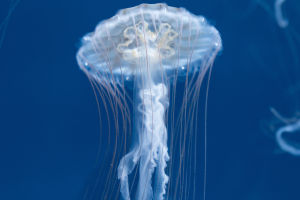Hey,Birds
In this world, almost every living person or person who has ever lived, sees them or hears their songs every day. Birds have been with us for so long, but do you really know them? This article will introduce 5 common birds.
1. Great tits
The great tit is a common forest bird, often found in European gardens, and is widely distributed in parts of Eurasia and North Africa. Apparently, the calls of great tits are simple and repetitive, their songs are often heard in the spring, and are easily distinguishable from the songs of various birds.
However, great tits' songs may sound simple, but scientists' research has revealed that their songs are actually very complex and varied, and also tells us how they use and perceive their own songs. The song of the great tit serves a dual purpose - attracting females and driving other males away from their territory.
2. Kestrel
A common bird in the open countryside of the Eurasian continent, the kestrel is well known for its widespread distribution and abundance, often hovering high in the wind, foraging on the small voles, their preferred prey. The kestrel hovering in the air, with its wings stretched and its tail straight when flying, is very similar to the upper and lower parts of a "Y" shape.
When people drive through the highway in the wilderness, they can sometimes be briefly witnessed. Kestrels often fly against the wind, and they can adjust and maintain their position in the air in response to oncoming air currents.
We often see their wings maintain a certain height by maintaining the same posture and angle in the wind, allowing the wind blowing towards them to lift their bodies naturally.
3. Secretary bird
The name Secretary bird comes from the spear-shaped crown feathers on its head, which are distributed behind the head, a bit like the quills that clerks and secretaries used to clip behind their ears.
These crests are black in contrast to the secretary bird's overall white and grey plumage on the head and torso, and males have slightly longer black crests than females. Secretary birds live in the open grasslands of sub-Saharan Africa, and although they can fly, these 1.2-meter-tall birds are almost land-dwelling with their extra-long legs.
The Secretary bird has the longest legs of any raptor, and most of its hunting is done with two claws. The Secretary bird does not have specialized prey objects like the other birds of prey in this section. Their diet is very diverse and wide-ranging, and their prey objects range from hares to small birds, reptiles, and large insects.
Snakes were once thought to be their main prey, but in fact snakes are only part of their complex diet. However, the Secretary bird's ability to kill snakes has won them praise from many African countries - vipers including bulging venomous snakes and cobras, and sometimes people will keep Secretary birds as pets in the garden to prevent snakes.
The Secretary bird is the national bird of Sudan.
4. Cuckoo
As soon as the song of the male cuckoo appears, it announces that the migratory bird has returned. But while many people can recognize cuckoos' song, few may recognize their slender, streamlined blue-gray figures as they fly overhead.
When they usually sing and perch on a branch, the cuckoo's wings hang down from the sides of the body, which looks a bit like a bird with an injured wing. Scientists equip the captured cuckoo with positioning equipment that transmits its position in real time via satellite communications.
In this way, scientists have revealed the details of the cuckoo's migration in great detail.
5. Arctic Terns
As globetrotters, arctic terns live in summer and almost always in continuous daylight. During the long days of the Arctic summer, these arctic terns build their nests in the Arctic Circle, and then come to the Antarctic region to "winter" in the summer of the southern hemisphere.
Arctic terns nest in large colonies, they simply choose a low-lying spot on sandy ground or surface vegetation as a nest, laying three eggs per nest. Two parent birds catch fish to feed their chicks, with their wings folded back, their heads first into the water and, more importantly, their beaks first into the waves.
This diving-style feeding method limits the depth of the Arctic tern's prey to less than 1 meter below the surface. The diet of arctic terns includes jellyfish, herring, capelin, and sometimes cod.


